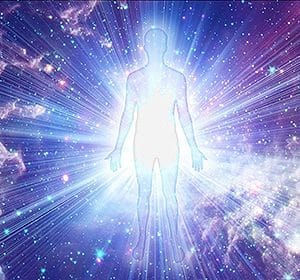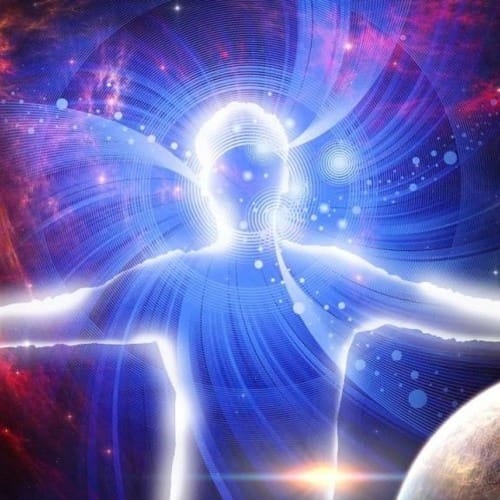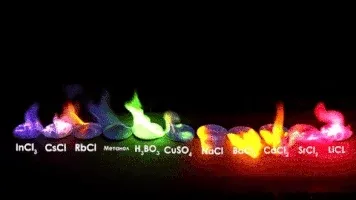HEALING

All The knowledge i can find about being a healer dumped
Healing can be approached in various ways, depending on cultural, personal, and medical beliefs. Here are some common methods:
- Conventional Medicine: This includes treatments prescribed or performed by medical professionals such as doctors, nurses, and therapists. It often involves medications, surgeries, physical therapy, and other evidence-based interventions.
- Alternative Medicine: Practices like acupuncture, chiropractic care, herbal medicine, and homeopathy fall under this category. While some alternative therapies lack scientific evidence, others are backed by research and may be used alongside conventional treatments.
- Mind-Body Techniques: These approaches aim to harness the connection between the mind and body to promote healing. Examples include meditation, yoga, tai chi, and guided imagery.
- Energy Healing: Practices like Reiki, Qigong, and therapeutic touch involve manipulating the body's energy fields to promote balance and healing. While their mechanisms aren't fully understood, many people find them beneficial for relaxation and stress relief.
- Nutritional Therapy: Diet and nutrition play a significant role in overall health and healing. Nutritional therapy focuses on using food, supplements, and lifestyle changes to support the body's natural healing processes.
- Spiritual Healing: Many religious and spiritual traditions incorporate rituals, prayers, and ceremonies to promote healing on a spiritual and emotional level. This can include practices like prayer, meditation, and attending religious services.
- Holistic Healing: This approach considers the whole person—mind, body, and spirit—in the healing process. It often combines various techniques and modalities to address physical, emotional, and spiritual aspects of health.
- Psychotherapy: Mental and emotional well-being are integral to overall health. Psychotherapy, including cognitive-behavioral therapy (CBT), psychodynamic therapy, and mindfulness-based therapy, helps individuals address psychological issues and promote healing.
- Physical Modalities: Techniques like massage therapy, hydrotherapy, and heat/cold therapy can promote relaxation, reduce muscle tension, and support physical healing.
- Self-Care Practices: Activities such as adequate sleep, regular exercise, healthy diet, stress management, and maintaining social connections are essential for overall health and can support the body's natural healing processes.
It's essential to approach healing holistically, considering both conventional and complementary therapies, and to consult with healthcare professionals when making decisions about your health.
- Conventional Medicine:
- Medications: Prescription drugs are used to treat a wide range of conditions, from infections to chronic diseases like diabetes and hypertension.
- Surgeries: Surgical procedures are performed to repair injuries, remove tumors, and correct anatomical abnormalities.
- Therapies: Physical therapy, occupational therapy, and speech therapy help rehabilitate patients recovering from injuries or managing chronic conditions.
- Alternative Medicine:
- Acupuncture: This traditional Chinese medicine practice involves inserting thin needles into specific points on the body to stimulate energy flow and promote healing.
- Chiropractic Care: Chiropractors manipulate the spine and other body structures to alleviate pain and improve overall health.
- Herbal Medicine: Plants and plant extracts are used to prevent and treat various ailments, often based on traditional knowledge passed down through generations.
- Homeopathy: This system of alternative medicine uses highly diluted substances to stimulate the body's natural healing abilities.
- Mind-Body Techniques:
- Meditation: Practices like mindfulness meditation and transcendental meditation help calm the mind, reduce stress, and promote emotional well-being.
- Yoga: Combining physical postures, breathwork, and meditation, yoga improves flexibility, strength, and mental clarity.
- Tai Chi: This gentle form of martial arts promotes balance, coordination, and relaxation through slow, flowing movements.
- Guided Imagery: Visualization techniques guide individuals through mental images to promote relaxation and reduce pain perception.
- Energy Healing:
- Reiki: Practitioners channel universal energy to the recipient through light touch or hovering hands to promote relaxation and balance.
- Qigong: This ancient Chinese practice combines movement, breathwork, and meditation to cultivate and balance Qi (life energy).
- Therapeutic Touch: Practitioners use their hands to manipulate the body's energy field to promote healing and alleviate pain.
- Nutritional Therapy:
- Dietary Changes: Adjusting one's diet to include more whole foods, fruits, vegetables, and lean proteins can support overall health and healing.
- Supplements: Certain vitamins, minerals, and herbal supplements may complement conventional treatments and support specific health goals.
- Lifestyle Modifications: Incorporating habits like mindful eating, staying hydrated, and avoiding processed foods can contribute to healing and overall well-being.
- Spiritual Healing:
- Prayer: Many religious traditions incorporate prayer as a means of seeking comfort, guidance, and healing from a higher power.
- Meditation: Spiritual meditation practices help individuals connect with their inner selves, find peace, and cultivate a sense of spiritual well-being.
- Ceremonies and Rituals: Rituals such as blessings, ceremonies, and sacraments provide opportunities for spiritual growth, healing, and community support.
- Holistic Healing:
- Integrative Medicine: Combining conventional treatments with complementary therapies to address the physical, emotional, and spiritual aspects of health.
- Mind-Body-Spirit Connection: Recognizing that health is influenced by interconnected factors, including lifestyle, environment, relationships, and beliefs.
- Individualized Care: Tailoring treatment plans to each person's unique needs, preferences, and goals to promote comprehensive healing.
- Psychotherapy:
- Cognitive-Behavioral Therapy (CBT): Focuses on identifying and changing negative thought patterns and behaviors to improve mental health and well-being.
- Psychodynamic Therapy: Explores how past experiences and unconscious processes influence current thoughts, feelings, and behaviors.
- Mindfulness-Based Therapy: Integrates mindfulness practices with psychotherapeutic techniques to enhance self-awareness, acceptance, and resilience.
- Physical Modalities:
- Massage Therapy: Manipulates soft tissues to relieve muscle tension, reduce pain, and promote relaxation and healing.
- Hydrotherapy: Uses water in various forms (e.g., baths, whirlpools) to alleviate pain, improve circulation, and support physical rehabilitation.
- Heat/Cold Therapy: Applies heat (e.g., hot packs, warm baths) or cold (e.g., ice packs, cold compresses) to reduce inflammation, relieve pain, and promote healing.
- Self-Care Practices:
- Sleep Hygiene: Establishing consistent sleep patterns and creating a conducive sleep environment to promote restorative sleep and overall well-being.
- Regular Exercise: Engaging in physical activity to improve cardiovascular health, build strength and endurance, and enhance mood and mental clarity.
- Healthy Diet: Consuming a balanced diet rich in nutrients to support immune function, energy levels, and overall health.
- Stress Management: Employing techniques like deep breathing, progressive muscle relaxation, and time management to reduce stress and promote relaxation.
- Social Support: Maintaining meaningful relationships and seeking support from friends, family, or support groups to cope with challenges and enhance resilience.
By incorporating a combination of these approaches, individuals can support their body's natural healing processes and promote overall health and well-being. It's essential to work with healthcare providers to develop a personalized approach that meets individual needs and preferences.

Spiritual healing is a deeply personal and multifaceted practice that encompasses various approaches depending on individual beliefs and preferences. Here are some general steps to guide you:
- Self-awareness: Begin by becoming aware of your inner self and acknowledging any emotional, mental, or spiritual imbalances you may be experiencing. This awareness is crucial for initiating the healing process.
- Intentions: Set clear intentions for your healing journey. Determine what specific aspects of your being you want to address and what outcomes you hope to achieve through spiritual healing.
- Connection with Higher Power: Many spiritual healing practices involve connecting with a higher power, whether it's the universe, a deity, nature, or your own higher self. Take time to establish this connection through prayer, meditation, or rituals that resonate with you.
- Mindfulness and Meditation: Practice mindfulness and meditation to quiet the mind, reduce stress, and cultivate inner peace. Regular meditation can help you become more attuned to your spiritual self and facilitate healing on a deep level.
- Energy Work: Explore energy-based healing modalities such as Reiki, acupuncture, or qigong. These practices focus on balancing the body's energy centers (chakras) and removing energetic blockages that may be contributing to your symptoms.
- Nature Therapy: Spend time in nature to rejuvenate your spirit and reconnect with the natural world. Whether it's a walk in the woods, gardening, or simply sitting by a body of water, nature has a profound healing effect on the mind, body, and soul.
- Creative Expression: Engage in creative activities that allow you to express yourself freely, such as art, music, dance, or writing. Creative expression can be therapeutic and help you process emotions, gain insights, and tap into your inner wisdom.
- Healing Practices: Explore various healing practices such as sound therapy, aromatherapy, crystal healing, or shamanic journeying. These modalities work on different levels of consciousness and can complement your spiritual healing journey.
- Seek Support: Consider seeking guidance and support from spiritual teachers, healers, therapists, or support groups. Surround yourself with individuals who uplift and inspire you on your path to healing.
- Gratitude and Forgiveness: Cultivate an attitude of gratitude and forgiveness as part of your spiritual practice. Expressing gratitude for the blessings in your life and forgiving yourself and others for past hurts can promote healing and inner peace.
Remember that spiritual healing is a journey, not a destination. Be patient and compassionate with yourself as you explore different practices and find what resonates with you. Trust your intuition and allow yourself to surrender to the healing process.

Energy healing is a holistic practice that aims to promote physical, emotional, and spiritual well-being by balancing the energy flow within the body. Practitioners believe that imbalances or blockages in the body's energy system can lead to illness or distress, and by manipulating this energy, they can facilitate healing.
There are various forms of energy healing, including Reiki, acupuncture, qigong, and therapeutic touch, among others. While the scientific evidence supporting the effectiveness of energy healing is still limited and often controversial, many people report feeling relaxed, calmer, and experiencing relief from symptoms after receiving energy healing sessions.
Ultimately, the efficacy of energy healing can vary from person to person, and it's essential for individuals to explore different modalities and practitioners to find what works best for them.

- Reiki: Reiki is a Japanese healing technique that involves the practitioner placing their hands lightly on or just above the recipient's body to channel healing energy. The word "Reiki" can be broken down into "rei," meaning universal, and "ki," meaning life energy. Practitioners believe that by channeling this universal life energy, they can promote relaxation, reduce stress, and facilitate healing on physical, emotional, and spiritual levels.
- Acupuncture: Acupuncture is an ancient Chinese healing modality that involves inserting thin needles into specific points on the body to balance the flow of energy, or qi (pronounced "chee"). According to traditional Chinese medicine, disruptions in the flow of qi can lead to illness or pain. By stimulating acupuncture points, practitioners aim to restore balance and promote the body's natural healing processes.
- Qigong: Qigong (pronounced "chee-gong") is a practice that combines gentle movement, meditation, and breathwork to cultivate and balance qi, or vital energy, within the body. Qigong exercises can vary widely, ranging from simple movements to more complex routines. Practitioners believe that regular practice of qigong can improve physical health, mental clarity, and emotional well-being by harmonizing the body's energy.
- Therapeutic Touch: Therapeutic touch is a hands-on healing modality in which the practitioner uses gentle touch or sweeping motions over the body to manipulate the recipient's energy field. The goal is to clear energy blockages, promote relaxation, and support the body's natural healing abilities. While the mechanisms of therapeutic touch are not well understood, some research suggests that it may help reduce pain, anxiety, and stress.
- Crystal Healing: Crystal healing involves using crystals and gemstones to balance and direct energy within the body. Each type of crystal is believed to have unique properties and vibrations that can affect the body's energy centers, or chakras. Practitioners may place crystals on specific parts of the body, wear them as jewelry, or use them during meditation to promote healing and well-being.
- Reiki: Reiki is a Japanese healing technique that involves the practitioner placing their hands lightly on or just above the recipient's body to channel healing energy. The word "Reiki" can be broken down into "rei," meaning universal, and "ki," meaning life energy. Practitioners believe that by channeling this universal life energy, they can promote relaxation, reduce stress, and facilitate healing on physical, emotional, and spiritual levels.
- Acupuncture: Acupuncture is an ancient Chinese healing modality that involves inserting thin needles into specific points on the body to balance the flow of energy, or qi (pronounced "chee"). According to traditional Chinese medicine, disruptions in the flow of qi can lead to illness or pain. By stimulating acupuncture points, practitioners aim to restore balance and promote the body's natural healing processes.
- Qigong: Qigong (pronounced "chee-gong") is a practice that combines gentle movement, meditation, and breathwork to cultivate and balance qi, or vital energy, within the body. Qigong exercises can vary widely, ranging from simple movements to more complex routines. Practitioners believe that regular practice of qigong can improve physical health, mental clarity, and emotional well-being by harmonizing the body's energy.
- Therapeutic Touch: Therapeutic touch is a hands-on healing modality in which the practitioner uses gentle touch or sweeping motions over the body to manipulate the recipient's energy field. The goal is to clear energy blockages, promote relaxation, and support the body's natural healing abilities. While the mechanisms of therapeutic touch are not well understood, some research suggests that it may help reduce pain, anxiety, and stress.
- Crystal Healing: Crystal healing involves using crystals and gemstones to balance and direct energy within the body. Each type of crystal is believed to have unique properties and vibrations that can affect the body's energy centers, or chakras. Practitioners may place crystals on specific parts of the body, wear them as jewelry, or use them during meditation to promote healing and well-being.
These are just a few examples of the many energy healing modalities available. While scientific research on the efficacy of energy healing is ongoing, many people find these practices to be valuable complements to conventional medical treatment for promoting holistic health and wellness.

- Pranic Healing: Pranic healing is based on the concept of prana, or life force energy, which is believed to permeate all living beings. Practitioners use techniques such as scanning, cleansing, and energizing to manipulate this energy and remove blockages or imbalances in the energy body. Pranic healing aims to promote physical, emotional, and psychological well-being by restoring the smooth flow of prana throughout the body.
- Sound Healing: Sound healing utilizes the therapeutic properties of sound vibrations to promote healing and relaxation. Practitioners may use instruments such as singing bowls, tuning forks, or gongs to produce specific frequencies and tones believed to resonate with the body's energy centers. Sound healing can help reduce stress, induce deep relaxation, and support emotional release by harmonizing the body's energy field.
- Biofield Therapies: Biofield therapies encompass a range of practices that work with the body's biofield, a subtle energy field that surrounds and permeates the physical body. These therapies include modalities such as Healing Touch, Reconnective Healing, and Polarity Therapy, which aim to balance and restore the flow of energy within the biofield to support health and well-being.
- Chakra Balancing: Chakras are believed to be spinning energy centers located along the spine, each associated with specific physical, emotional, and spiritual aspects of human experience. Chakra balancing techniques, such as meditation, visualization, or energy work, aim to align and harmonize the chakras to promote overall health and vitality. Practitioners may use various tools, such as crystals, essential oils, or affirmations, to support chakra balancing.
- Healing Touch: Healing Touch is a gentle, non-invasive energy therapy that utilizes touch to influence the body's energy field and promote healing. Practitioners use techniques such as clearing, energizing, and balancing to support the body's natural ability to heal itself. Healing Touch can be used to address a wide range of physical and emotional conditions, including pain, stress, and anxiety.
These additional modalities offer diverse approaches to energy healing, each with its own unique principles and techniques. While the mechanisms underlying energy healing may not be fully understood by conventional science, many people find these practices to be effective tools for promoting relaxation, reducing stress, and supporting overall well-being. As with any complementary therapy, it's essential to work with qualified practitioners and integrate energy healing into a comprehensive approach to health and wellness.

Title: The Enigmatic World of Crystal Healing: Unveiling Spiritual Connections and Healing Properties
Introduction
In today's fast-paced world, finding solace and spiritual connection has become increasingly important for many individuals. One practice that has gained popularity is crystal healing, an ancient art that harnesses the energy and healing properties of various gemstones. In this article, we will delve into the enigmatic world of crystal healing, exploring its spiritual connections and uncovering the theories behind its healing properties.
The Power of Crystals
Crystals have long been revered for their beauty, but their significance goes beyond aesthetics. Many believe that crystals possess unique energy vibrations that can positively impact our physical, emotional, and spiritual well-being. Each crystal is said to emanate a distinct frequency, aligning with different aspects of our lives and chakras.
Spiritual Connections
Crystal healing aims to restore harmony and balance within the body and mind by tapping into the spiritual connections between crystals and individuals. It is believed that when we interact with specific crystals, we can attune ourselves to their vibrations, amplifying our own energy and intentions.
Furthermore, crystals are believed to possess the ability to absorb negative energy and promote positive energy flow. This is why they are often used in meditation, as their presence can help create a peaceful and focused environment.
Understanding Crystal Healing Properties
The healing properties of crystals are as diverse as the crystals themselves. Each crystal is associated with different physical, emotional, and spiritual attributes, offering unique benefits to those who engage with them.
For example, amethyst is often associated with spiritual growth, calming the mind, and enhancing intuition. Rose quartz, known as the stone of love, is believed to open the heart chakra and promote self-love and compassion. Meanwhile, clear quartz is prized for its ability to amplify intentions and purify energy.
While scientific evidence supporting crystal healing remains limited, many individuals claim to have experienced positive effects from their crystal interactions. It is important to approach crystal healing with an open mind and understand that the benefits may vary from person to person.
How to Incorporate Crystal Healing into Your Life
If you are intrigued by crystal healing and wish to incorporate it into your spiritual practice, there are several ways to get started. One popular method is to wear crystal jewelry, allowing their energy to be in constant contact with your body. You can also place crystals in your living space or create crystal grids, which are arrangements of crystals used to amplify intentions and manifest desires.
Additionally, meditation with crystals can deepen your spiritual connection and aid in relaxation. Simply hold a crystal in your hand or place it on your body during meditation to enhance the experience. You can also explore the art of crystal layouts, where specific crystals are placed on different parts of the body to target specific areas of healing.
Conclusion
Crystal healing offers a unique and personal journey towards self-discovery, healing, and spiritual growth. While its effectiveness may vary from person to person, many individuals find solace and enhanced well-being through their interactions with crystals. Whether you choose to wear crystals as jewelry, meditate with them, or create crystal grids, the possibilities are endless when it comes to incorporating crystal healing into your life. Embrace the enigmatic world of crystals and allow their energy to guide you on your spiritual path.
![Guild of the Dragons -Knowledge Node [^]~~~~~Gratitude~~~~~[^] G0TD](https://guild-of-the-dragons.ghost.io/content/images/2024/02/depositphotos_1562554-stock-photo-golden-dragon.jpg)